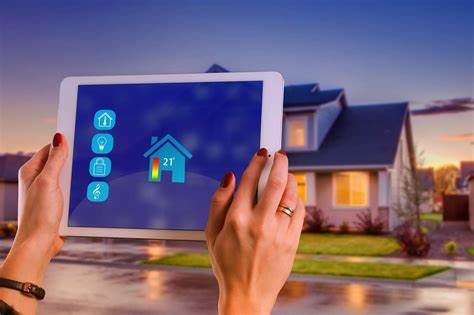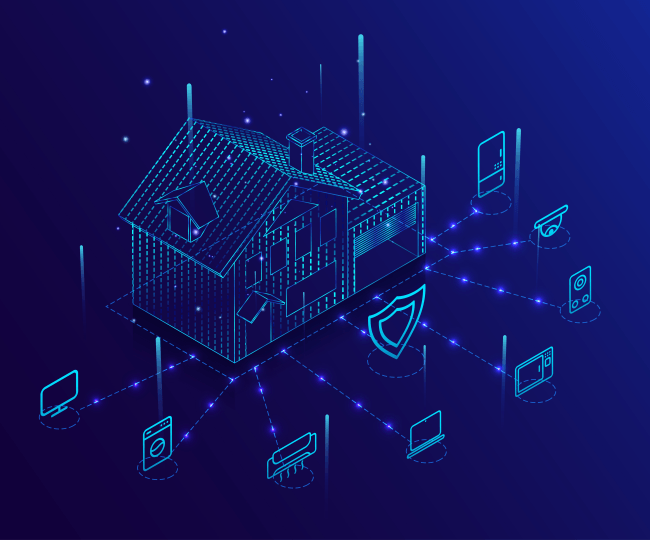Welcome to the ultimate guide on how to protect your what is Home tech protection ATT. In today’s digitally connected world, our homes are filled with a growing number of devices that make our lives easier and more convenient. From smart speakers and thermostats to security cameras and door locks, these devices offer numerous benefits. However, they also present potential vulnerabilities that can be exploited by cybercriminals.
At [Brand Name], we understand the importance of keeping your home tech secure. That’s why we’ve created this comprehensive guide to help you safeguard your smart home. In this article, we’ll walk you through the essential steps you need to take to protect your devices and your personal data.
Contents
- 1 Understanding the Potential Risks and Vulnerabilities of Smart Home Devices
- 2 Common Security Threats to Smart Homes and How to Mitigate Them
- 3 Steps to Securing your Smart Home Network
- 4 Best Practices for Securing Individual Smart Home Devices
- 5 Importance of Regular Software Updates and Firmware Upgrades
- 6 Additional layers of Protection Firewalls, Antivirus Software, and VPNs
Understanding the Potential Risks and Vulnerabilities of Smart Home Devices
Home tech protection ATT devices are designed to make our lives more convenient, but they also come with their own set of risks and vulnerabilities. One of the main concerns is the potential for cybercriminals to gain unauthorized access to your devices and your personal information. This could result in privacy breaches, identity theft, or even physical harm if someone gains control of your security systems.
Another risk is that many smart home devices are connected to the internet, which means they can be accessed remotely. While this allows for greater convenience and control, it also opens up the possibility of remote attacks. Cybercriminals can exploit vulnerabilities in the software or firmware of your devices to gain access to your network and compromise your privacy.
To protect your home tech protection ATT, it’s important to understand these risks and vulnerabilities. By being aware of the potential threats, you can take the necessary steps to mitigate them and ensure the security of your devices and your data.
Common Security Threats to Smart Homes and How to Mitigate Them
There are several common security threats that smart home owners should be aware of. One of the most common is weak or default passwords. Many smart home devices come with default passwords that are easily guessable or widely known. Cybercriminals can exploit this weakness to gain unauthorized access to your devices and your network. To mitigate this threat, it’s important to choose strong, unique passwords for each of your devices and change them regularly.
Another common threat is insecure Wi-Fi networks. If your home network is not properly secured, cybercriminals can intercept your internet traffic and gain access to your smart home devices. To protect your network, make sure to use a strong password for your Wi-Fi, enable network encryption (such as WPA2), and regularly update your router’s firmware.
Phishing attacks are also a significant threat to smart homes. Cybercriminals may try to trick you into revealing sensitive information or login credentials by sending fake emails or messages that appear to be from legitimate sources. To avoid falling victim to phishing attacks, always double-check the sender’s email address or URL, avoid clicking on suspicious links, and be cautious when providing personal information online.
Steps to Securing your Smart Home Network
Securing your smart home network is essential to protect your devices and your personal data. Here are the steps you can take to ensure your network is secure:
- Change the default password of your router: The default password of your router is often easily guessable, so it’s important to change it to a strong, unique password. This will prevent unauthorized access to your network.
- Enable network encryption: Ensure that your Wi-Fi network is encrypted with a strong encryption protocol, such as WPA2. Encryption adds an extra layer of security by encoding the data transmitted between your devices and the router.
- Separate your smart home devices into different networks: Consider creating separate networks for different categories of smart home devices, such as one for entertainment devices and another for security devices. This can help isolate any potential vulnerabilities and prevent an attack on one device from spreading to others.
- Set up a guest network: If you frequently have guests connecting to your Wi-Fi, it’s a good idea to set up a separate guest network. This network should have limited access to your smart home devices and should be isolated from your main network to prevent any potential security breaches.
- Enable two-factor authentication (2FA): Many smart home devices now offer the option to enable two-factor authentication, which adds an extra layer of security. With 2FA, you’ll need to provide a verification code in addition to your password when logging into your devices.
By following these steps, you can significantly enhance the security of your smart home network and reduce the risk of unauthorized access.
Best Practices for Securing Individual Smart Home Devices
In addition to securing your network, it’s important to take steps to secure each individual smart home device. Here are some best practices to follow:
- Change default usernames and passwords: Just like routers, many smart home devices come with default usernames and passwords that are easily guessable. Change these credentials to strong, unique ones to prevent unauthorized access.
- Keep devices’ firmware updated: Manufacturers regularly release firmware updates to address security vulnerabilities and improve performance. Make sure to regularly check for and install updates for all your smart home devices to stay protected.
- Disable unnecessary features: Some smart home devices come with features that you may not need or use. It’s a good idea to disable any features that are not necessary to minimize potential vulnerabilities.
- Configure privacy settings: Review the privacy settings of your smart home devices and adjust them according to your preferences. For example, you may want to disable any data-sharing features or limit the collection of personal information.
- Use a firewall: Adding a firewall to your network can provide an additional layer of protection by monitoring and controlling incoming and outgoing network traffic.
By implementing these best practices, you can ensure that each of your smart home devices is as secure as possible.
Importance of Regular Software Updates and Firmware Upgrades
Regularly updating the software and firmware of your smart home devices is crucial for maintaining their security. Manufacturers release updates to address vulnerabilities and improve overall performance. By keeping your devices up to date, you can ensure that you have the latest security patches installed, reducing the risk of a successful cyber attack.
To stay on top of updates, check for new firmware releases and software updates regularly. Many devices allow you to enable automatic updates, which can simplify the process. Additionally, make sure to download updates from official sources, as downloading from unofficial websites can pose security risks.
Remember that updating your devices’ software and firmware is an ongoing process. Set a reminder to check for updates periodically and make it a habit to keep your smart home devices up to date.
Additional layers of Protection Firewalls, Antivirus Software, and VPNs
While securing your network and devices is essential, there are additional layers of protection you can add to further enhance the security of your smart home.
- Firewalls: A firewall acts as a barrier between your network and the internet, monitoring incoming and outgoing traffic and blocking unauthorized access. Consider installing a firewall on your network to add an extra layer of protection.
- Antivirus software: Install reputable antivirus software on your devices to detect and remove any malicious software or viruses that could compromise your smart home’s security. Regularly update the software and run scans to ensure optimal protection.
- Virtual Private Networks (VPNs): A VPN encrypts your internet traffic and routes it through a secure server, protecting your data from potential eavesdroppers. You can use a VPN to secure your smart home devices when accessing them remotely or when connecting to public Wi-Fi networks.
By implementing these additional layers of protection, you can further safeguard your smart home from potential threats.
Protecting your smart home is crucial in today’s digital age. By understanding the potential risks and vulnerabilities, implementing security measures, and regularly updating your devices, you can ensure the safety and privacy of your smart home. Don’t let the fear of cyber threats hold you back from enjoying the benefits of a smart home. Arm yourself with the knowledge and strategies provided in this guide, and take the necessary steps to stay safe and secure. Your smart home can be both cutting-edge and impenetrable.




